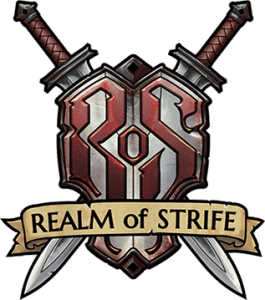Equipping your new character can be a daunting task, but is a huge component of character customization. Here’s what you need to know.
Initial Gold
If you haven’t already, make sure you know how much gold your character starts out with initially. While there is a huge assortment of different equipment a character can have, at level one you will only be able to afford the basics. Determining your initial gold will give you a budget to work with for equipping your new character.
Proficiency
Your biggest purchases up front will be your weapons and armor. That’s why its important to know what you can use right away and what you might training in before you can equip it.
A player character may equipment any weapons or armor that they so choose, however unless that character is proficient with a given weapon and/or armor type they will suffer Combat Penalties.
Each character class has Natural Proficiencies with several weapon and armor types upon character creation. Classes also have a selection of Trainable Proficienies that can be learned at any time. There are no specific level requirements for training in new weapon and armor types, however there is typically a gold and training time requirement (see Shops: Trainers).
Natural and Trainable Proficiencies can be found in the associated Class Codex for a player character. Any weapon or armor type that is not listed as a Proficiency can never be used without suffering Combat Penalties (i.e. a Mage can never Plate armor without suffer penalties).
Armor Basics
While its entirely your choice how much or little armor you purchase, there a re a few modifiers that could effect your character if you choose to spend everything on that big-bad weapon and just stroll into your first battle in your underwear.
- Characters suffer -10 initiative if the Leg Slot is not filled (with the exception of racial passive: Half-horse)
- Characters suffer -1 movement if the Foot Slot is not filled (with the exception of racial passive: Thick Footed)
- Characters will drop their weapons if they critically miss with them while the Hand Slot is not filled (treat as disarmed)
Weapon Loadouts
Every character is allowed a primary weapon load out and a secondary weapon load out (Common example would be wielding a sword and shield in your primary mainhand/offhand, with a bow and quiver in your secondary mainhand/offhand). This represents weapons that are sheathed or otherwise stored on your character in a readily accessible manner. Characters may switch between load outs for no cost (i.e. does not require a instant or action), but can only do so during their own turn.
Example of how Weapon Load outs Function: Bow and Sword
You have a bow in your primary load out (for ranged damage) and a sword in your secondary load out (for melee damage and parrying). You are facing off one on one versus an Orc armed with an axe. You are first in the turn order. When the battle begins you have your bow in hand because it is your primary load out. On your turn so you shoot with your bow (an action, and actions always end your turn). That means now during the enemies turn your bow is still in your hand. So when he rushes into base contact and swings at you, you can’t parry with your sword because its still sheathed. Now its your turn again. You switch to your sword and attack (again an action, and actions always end your turn). Now during the enemies turn your sword is in your hand so when he swings you can parry. But lets say a second Orc arrives on the scene, placed last in the turn order, the moves towards you but fails to get into base contact. Hoping to one shot him before he can get into base contact, on your turn you switch to your bow again and take a shot. It’s your lucky day, you score a massive Crit and drop the new Orc before he can get to you. However, the original Orc continues to swing at you, this time you cannot parry because you sheathed your sword to take the shot.
Example of how Weapon Load outs Function: Dual Axes and Staff
You have a dual wield axes in your primary load out (for melee damage) and a 2 handed staff in your secondary load out (for the ward-off). You are facing off one on one versus an Orc armed with an axe. You are first in the turn order. When the battle begins you move into base contact with the Orc and swing both your axes (an action, and actions always end your turn). That means now during the enemies turn your axes are still in your hand. So when he swings at you, you can’t ward him off with your staff because its still slung across your back. The Orc Crits you really hard and just about kills you. Now its your turn again. You switch to your staff and attack, even those its a much weaker attack that your two axes, because you’re desperate to stay alive until back up arrives (again this is an action, and actions always end your turn). This time during the enemies turn your staff is in your hand so when he swings you can attempt to ward him off, which you do. Just before your turn, your healer arrives on the scene and Crit heals you back into the fight. So you switch back to your dual wield axes and put the Orc down for good





